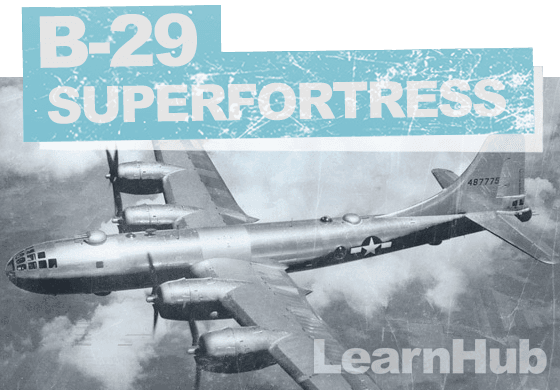The B-29 Superfortress was a four-engine heavy bomber aircraft used by the United States during World War II and the Korean War. It was powered by four Wright R-3350 Duplex-Cyclone radial engines, each producing around 2,200 horsepower. The R-3350 was a large, powerful engine that was used on a number of different aircraft during the 1940s and 1950s, including the B-29, B-50, and P-47.
It was equipped with a two-stage supercharger, which allowed it to maintain high power output at high altitudes, making it well-suited for the B-29’s role as a high-altitude strategic bomber.
The R-3350 was known for its reliability and performance, but it also had some issues, including a tendency to catch fire and a high fuel consumption rate. Despite these issues, it was widely used on military and civilian aircraft due to its impressive power and versatility.
The B-29 also featured a number of other advanced technologies, including a pressurized cabin, a remotely controlled gun turret, and a complex electrical system. These features made the B-29 one of the most advanced aircraft of its time and a key player in the Allied victory in World War II.
In addition to its impressive power, the R-3350 was also known for its complexity and reliability issues. It was prone to overheating and engine fires, and required careful maintenance to keep it running at peak performance. Despite these challenges, the R-3350 was widely used in a variety of military and civilian aircraft during the 1940s and 1950s.
- The Battle of Midway: Turning the Tide in the Pacific - June 7, 2023
- The D-Day Operation of June 6, 1944 - June 6, 2023
- The B-29 that Changed History - June 4, 2023



